
It may surprise you to find out, but I LOVE learning about farms. Farming is one of the oldest ways of life, and it's hugely important to society. (Remember history class? It takes a surplus of food to get to the art part of a culture!)
Last Friday I had the opportunity to tour three local farms with people from the Missouri Farm Bureau. Like I said, I love farms, so I was pumped!
As I looked around the farms and heard from the farmers and their families, I was astounded at how high-tech farming has become and all the science farmers incorporate in their work. I think a lot of us think of "Green Acres" or "Little House on the Prairie" when we think of farms, but that's not true for most of them today! I learned SO MUCH on this trip that I can't possibly post it all here!
In the earlier part of the 20th century, scientists were afraid the world would run out of food as the population grew. With their farming methods of the day, we would have had a food crisis by now. However, major advancements have been made to make farming more efficient, safer, and cheaper to provide us with affordable food.
To show how far farming has come and its importance in history, here are some farm facts from the 1940s:
Farming Then
In 1940, 18% of the American workforce is employed in farming. One farmer supplied an average of almost 11 people with food.
In 1940, 58% of farms had at least one car, 33% had electricity, and only 25% had a phone.
 |
| source |
In 1941, the National Victory Garden program is launched in the United States. This initiative encouraged civilians to start their own gardens to allow more food to be sent to soldiers overseas. It was a big part of preventing food shortages during the war.

1942-1949: Food price regulation and rationing are in place. Victory gardens become an important way to supplement rationed food options. Women take the place of men in doing a lot of farm work while the men are at war. They get a taste of freedom from working outside the home, and their work is seen as a patriotic duty.
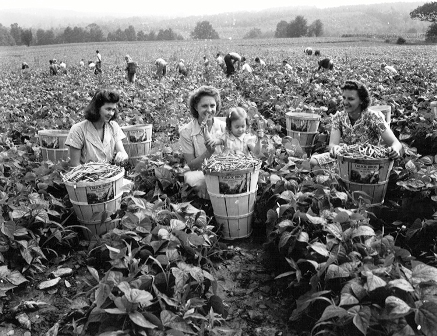 |
| source |
Facts found at this source.
 |
| source |
Farming Now
As of 2012, only 1% of the American workforce works in farming, fishing, or forestry. Less than 2% of Americans live on farms. (source)
The average American farm is still family owned but has increased to 433 acres. (source)
 |
| calves at the Samek dairy farm |
Nowadays, about 41% of the U.S. is farmland. We still export a lot of our food, and U.S. farmers produce 46% of the world’s soybeans, 41% of the world’s corn, 20.5% of the world’s cotton and 13% of the world’s wheat. (source)
Increased technology has made farmland more productive than ever. One farmer now supplies food for 144 people! (source)
 |
| Mr. Drake, a row crop farmer |
Things I Learned About Farming
There is an increasingly large gap between farmers and consumers. It didn't used to be this way. Back in the day, nearly everyone had a family member that lived on a farm, or they lived on a farm already! Agricultural basic knowledge was commonplace. Nowadays, that just isn't true. Most Americans don't know why farmers do what they do or where their food comes from. I think it's important to bridge this gap to build trust between farmers and consumers and to create the healthiest, safest food for our communities.
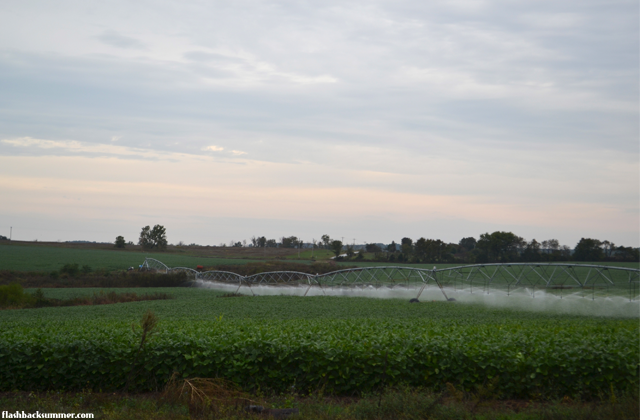 |
| Drake Farm |
The vast majority of farmers strive to produce good food using safe practices. Most of them live on the land they farm, drink the water from the wells beneath their fields, and eat the food they produce. They want safe food for their consumers and for their own families.
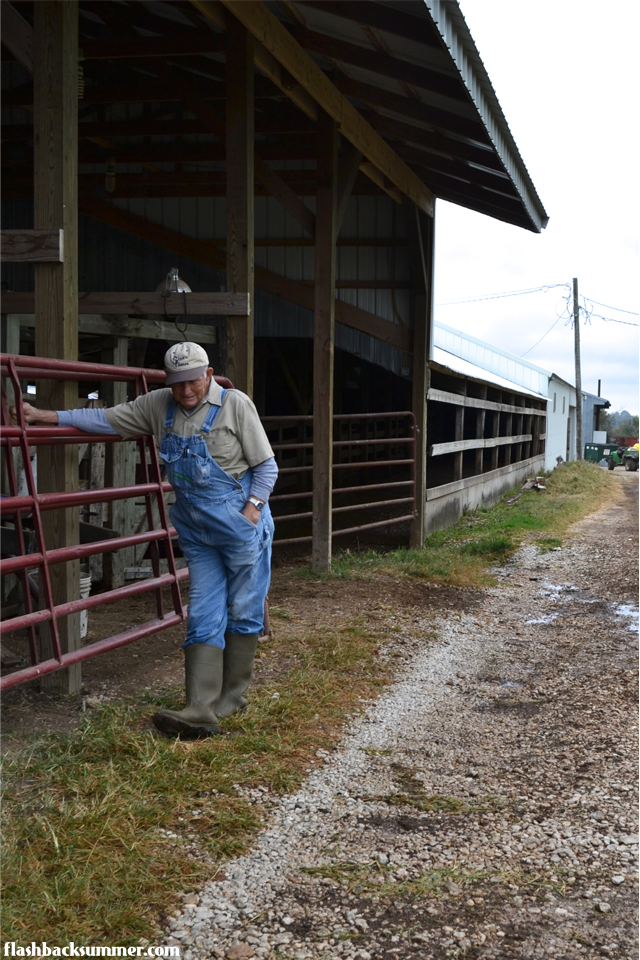 |
| Mr. Samek, the dairyman at Samek Farm, a multi-generational family farm |
There are very, very few farmers that don't care about their animals. Besides being a moral thing to do, taking proper care of animals and providing for their needs produces better food. (In fact, the tags you see on cows' ears are like cow Fit Bits! They track the cow's activity and health on a daily basis to ensure they are doing well. Farmers are very serious about the health of their animals.)
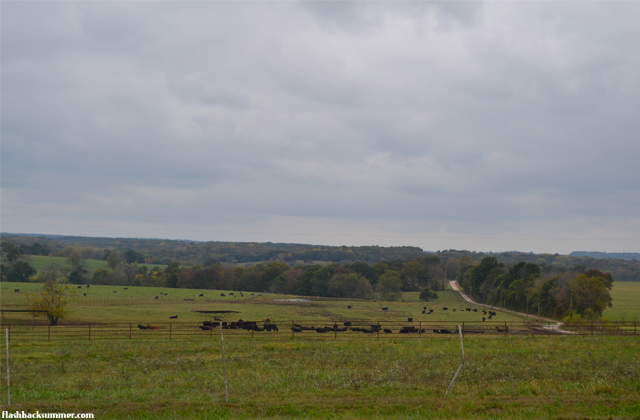 |
| Cribbs beef farm |
Farming technology is crazy advanced! There are combines that literally drive themselves, GPS systems in tractors, and fine-tuned machinery that makes farming hugely efficient. These technologies also allow farmers to use only as much water or chemical as is absolutely needed in a field, no more and no less. Agriculture is more precise and accurate than it has ever been.
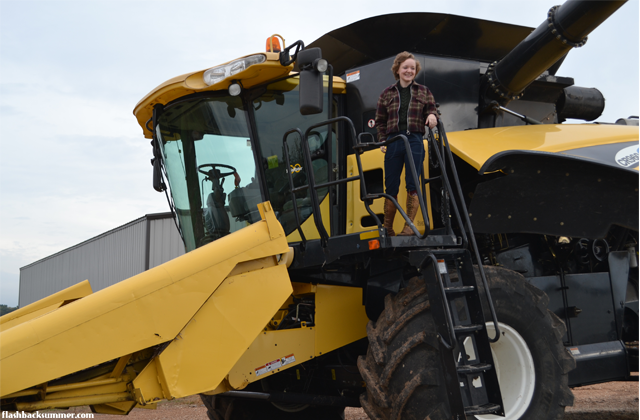 |
| Yes, this is me on a combine. It was awesome. |
Technology and scientific advancement needs to be learned about, not feared. There's a lot of talk of GMOs, pesticides, and other chemicals these days. While it is important to be educated on these topics, I think we need to make more room for farmers to explain their processes before we freak out. A lot of GMOs allow farmers to use less chemicals. The row crop farmer we talked to, Trent, said they use less than a quart of many herbicides and pesticides on their land per acre; most of what you see being sprayed on a field is water. The dairy farmer explained how the hormones they use to help cows produce more milk are already present in cow's bodies; they aren't mutant-juice created in a lab, and there's no detectable difference in the milk. Take time to learn about these issues, but try to hear from a real farmer, too. The media can make things seem scary when, in reality, they aren't. Farmers and their families eat their produce, too; they aren't just faceless corporate farms trying to make a profit. Learn from them!
 |
| Mr. Cribbs (in the green hat) teaching us the ways of beef farming |
Do any of you have ancestors that were farmers back in the day? What were your ideas of farmers and farming before this post? Have you ever gotten the chance to go to a farm or talk to a farmer about his work?
I learned far too much to include in this post, so if you have questions, feel free to ask! We can find answers together!
For more learning, check out these sites:
Growing a Nation: The Story of American Agriculture
1941 Agriculture Video
Missouri Farm Bureau website








I think being more transparent about the farming process is really important. I am vegan so I know a lot of about animal farming, and I just wanted to point out a few things. 1) there is a difference between smaller farms and factory farming. It is hard for consumers to tell the difference when buying, so I always suggest to people try and buy directly from farmers if you will eat meat. and 2) Sometimes farmers have little control over how the animals are treated, mostly in chicken farmer as many big companies "rent" out chicken coops from smaller farmers. There is a great video about it on Last Week Tonight, which is about FARMER RIGHTS, not chickens. https://www.youtube.com/watch?v=X9wHzt6gBgI
ReplyDeleteI am part of a CSA, which keeps me pretty active with the farmers. I get probably 75% of produce from them during the summer and fall seasons and some of it gets jarred or lasts longer in the winter (like the root vegetables and squashes) It is really interesting to kind-of learn which fruits and veggies thrive in your area, what time of the year, how long, etc. For example even though I live in New Jersey where blueberries is a big crop, my CSA doesn't grow them because the ground isn't sandy enough. My CSA we go to the farm to pick out our food, and somethings we pick by hand. And rarely the farmers send out emails asking help from shareholders to pick things. There are other cool things like pot lucks and such, but I rarely go to them. I know most CSAs are more about farmers pairing off and bringing baskets of food to specific locations for people to pick up. And I've heard some CSAs fudge up the baskets because some people demand things like avocados.
So Emily, I have a question, do you know if CSA (Community Supported Agriculture) is popular in the midwest? I know it is trendy on the different coast lines. And do you have things like "pick your own" style farms? Like it is common over here to have pick your own apple farms, which are fun for families, and you can get some great deals on "organic" apples or peaches.
Yes, this is all true. We have all kinds of farms here, and the vast, vast majority are family-owned (just like most American farms these days). We have organic farms, conventional farms, community gardens, CSAs, etc. We've got them all. However, in my area people in town know who the farmers are. They're a part of our communities. Oftentimes people buy straight from the farm or at a farmer's market (which are really popular here), in addition to signing up for CSAs.
ReplyDeleteI can't really speak to stats, but that's my experience. It could be very different around larger cities, but around here the gap between farm and table isn't large. You can drive 10-15 minutes (or less) in any direction outside of a town and hit a farm.
Thanks for sharing! I know here it is a little bit of your are a farmer and know the community, or you don't. I find older people are the ones stopping by the farms stands on the side of the roads, though some younger people go to farmer markets, I just think some people assume they are more expensive so they avoid them (maybe?)
DeleteI think what is more common here on the East coast is a growth in low-income urban neighborhoods. I think is a great approach to lower crime rates, as it gives at risk kids something productive and rewarding in their lives. It also provides fresh produce to areas that might be more inclined to each cheap food products (like packaged foods which are fats, starches, salt, sugar, and low grade proteins, which aren't alone bad, just you need more variety)
I grew up on a dairy farm and comparing how I grew up to today's dairy farm the two are totally different. We just happened to be discussing how my dad let our 60 cows out everyday to graze vs.some farmers who learn today in school that they don't need to be out. To me that's strange.
ReplyDeleteI still live in a very rural area. I drive to a local farm to buy my organic eggs. My meat comes from a local farmer as well as my fruits and veggies. I also have my own garden to freeze and can from. I buy my flour from an organic mill and we have many farmers markets. I consider myself very lucky.
I understand the concept of GMOs but I'm not interested in consuming them since I've watched too many people have some sort of gluten issue. It didn't use to be this way when I grew up and I have to think that it comes from today's farming practices. In my opinion we are consuming food that's been tampered with.
I'd have to say that a lot of farmers in our area are going back to the older practices of farming because they know bigger is not always better.
As always an interesting blog post.:)
Yeah, the dairy farm guy I talked to on this trip said they'll let their cows out a bit, but they prefer to feed them indoors so they can control their diet and make sure they're getting the best nutrition. They also said pasturing is a fad now though, since it's cheaper. Farming has fads!
DeleteThen what I was told by the row crop farmer about GMOs is that they generally take one bit of DNA from one plant or animal and combine it with another. He said they've had problems with corn borers, a bug that eats up the inside of corn stalks. Now they have GMO corn seeds that have integrated a protein from that bug in with the corn DNA, so when the corn borer bites the plant, the protein sends a message that says, "You're full; you don't want to eat this." It protects the corn and allows farmers to use less chemical in getting rid of bad bugs. So not all GMOs are bad; I think it comes down to research!
Agree! Research till you find your happy place and go with what sings to your heart. ;)
DeleteGMOs are always a tough topic because it isn't as simple as GMO=bad. Pretty much GMOs aren't going to kill you (well they could, but that would be if you put the DNA from a toxic plant into your GMO, those aren't being made and sold) and from what I understand that some GMOs have bacteria DNA put into them, a bacteria that is used in "organic" farming. Most studies found that the bacteria DNA in GMOs have lower levels than in organic farming, that would normally get sprayed all over the place and have a bigger chance to interact with the environment. So another pro-GMO topic.
DeleteAnd I've seen some of the farms that don't let their cows go to pasture. They are gross. The cows are suppose to stand in a small square and stay there, but they don't and walk all in their waste, and many slip and fall. But as Emily mentioned there is a fad for pasture farming. She mentioned because it is cheaper (which it could be depending on the scale and where your land is, aka not NJ our property taxes are crazy) but it is also because a growing movement for animal welfare and health. Some people recognize some large scale milk production doesn't keep cows in their best interest, and some health nuts recognize that some of the hormones and antibiotics are being used because some conditions aren't great so farms protect the animals with drugs. So it is kind-of a "healthy cow gives healthy milk" sort of logic, which probably doesn't actually work. XD
Very interesting post! I love the comparison of the historical farming and the modern. We don't have a farm, but I do grow a lot of my own food and I plan eventually on having a subsistence farm. I love learning about agricultural practices.
ReplyDeleteI'm still not a big fan of GMOs though. They can reduce pesticide dependence in the short term, but there have been cases of bugs becoming resistant to the effects. The GMO laced produce then requires the same use of pesticides as conventional produce, plus it's possibly tainted non-GMO crops in the process. (GMO corn is actually banned in Mexico, since it was threatening their native corn varieties). I also don't like the bully tactics of the big GMO producers like Monsanto and, I get a little uncomfortable with food being "patented" and controlled by mega-companies and not the farmers that grow them (farmers pay a licencing fee to use GMO seed). I also hate that I never know if I'm buying GMO or not, since labeling is not required, so I try to buy organic when I can afford it or grow my own.
We don't have the milk-hormone issue in Canada since the use of hormones has been banned for a number of years. (I still buy organic, non-homogenized milk in a glass bottle from a local dairy though. It's expensive, but it tastes so much better that I can't go back to "normal" milk).
Those are all really good points, and they mentioned a lot of these things on the tour, too. I think it all comes down to what you're comfortable with for you and your family after doing the research!
DeleteI love the contrast of farming then and now. You got some great shots too! Hope you had fun and made some new bloggy friends too. :)
ReplyDeleteThank you very much for this wonderful, thought provoking post and look at the history of farming past and present. While my own parents have never farmed, I come from a long line of folks who have on both sides of my family tree and have the deepest respect for those who have helped put food on our tables for thousands upon thousands of years.
ReplyDelete♥ Jessica